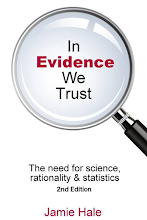Replicable (reproducible) findings are important to science; they are a sub-component of converging evidence. When referring to the replication crisis it is important to understand that what is meant- is lack of replicating statistically significant findings. It would be more precise to say there is a "statistically significant replication crisis." Consider replication from another perspective; the original study failed to detect stat...sign.. (using criteria NHST prevalent with use of frequentist stats), but additional studies detect statistical significance. What would the implications be?? College instructors should make an effort to address this condition- non-significant precedes significant findings. Students are often advised no need to try to replicate non-significant findings, but sign..findings should be replicated. This implies that the non-sign....findings must be accurate (if they occurred first), even though all studies are susceptible to flaws.
Gelman asserts the time-reversal heuristic needs consideration: "One helpful (I think) way to think about this episode is to turn things around. Suppose the Ranehill et al. experiment, with its null finding, had come first. A large study finding no effect. And then Cuddy et al. had run a replication under slightly different conditions with a much smaller sample size and found statistically significance under non-preregistered conditions. Would we be inclined to believe it?"
What are some different types of replication studies?
There are least 3 general types of replication studies- direct replication, conceptual replication and replication-plus-extension. In direct replication, researchers attempt to conduct research using methods that are as close as they can to those used by original researchers. The more transparent the original research the easier it will generally be to directly replicate....
Replication is an important part of science. Non-sign..and
sign...studies may be flawed. An array of variables determine the value of the
findings- publication source, funding
sources, study replication, study design, sample size, conflicting interest,
sampling error, different measures of reliability and validity, reporting
limitations, and other possible criticisms of the study.
The top-tier of scientific evidence is converging evidence.




